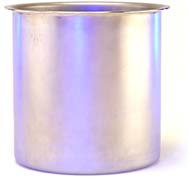Deep drawing
From DDL Wiki
Process
Deep Drawing is a manufacturing process where a flat sheet metal blank is formed into a box shaped or cylindrical part. This process occurs by placing the sheet metal blank over a die opening where it is held in place with a blankholder, also known as a hold-down ring. A punch then moves downward and pushes the blank into the die cavity, where it is formed into the specified shape. The punch can be operated either mechanically or hydraulically. If the properties of the sheet metal are such that the thickness of the sheet metal is too thick to enter the clearance between the punch and the die, then a process called ironing is used to reduce the wall thickness such that the deep drawing process can still be used. Here is an animation of how the deep drawing process actually works. [1]
Materials
The most commonly used materials in this process is alloy cast iron, tools steels. Other materials including carbides and plastics can also be used. These materials are used in the sheet metal form. The kind of shapes that are made with this process are box shapes and cylindrical parts.
Why choose deep drawing?
This method should be used if the manufacturer wants to produce a lot of copies of the same product with the same dimensions. This method of manufacturing is used in many industries, like the automobile industry, or beverage companies. Since there are millions of cars and soda cans made every year, this process is extremely fast and is a very reliable process.
Design knowledge
The things that the designer should take into account when designing the process are the sheet thickness compared with the product dimensions. If there are too many bends in the metal, then when the metal gets drawn, the thickness of the wall will get thinner and not as strong. Another design consideration is the shape of the design in the flat layout. This is important because you do not want to lose a lot of material to scrap parts. If excess material is lost due to scrap, this means that the company is losing more money on each part made.
References
"Manufacturing Processes for Engineering Materials" by Serope Kalpakjian and Steven R. Schmid, pgs 374-389

